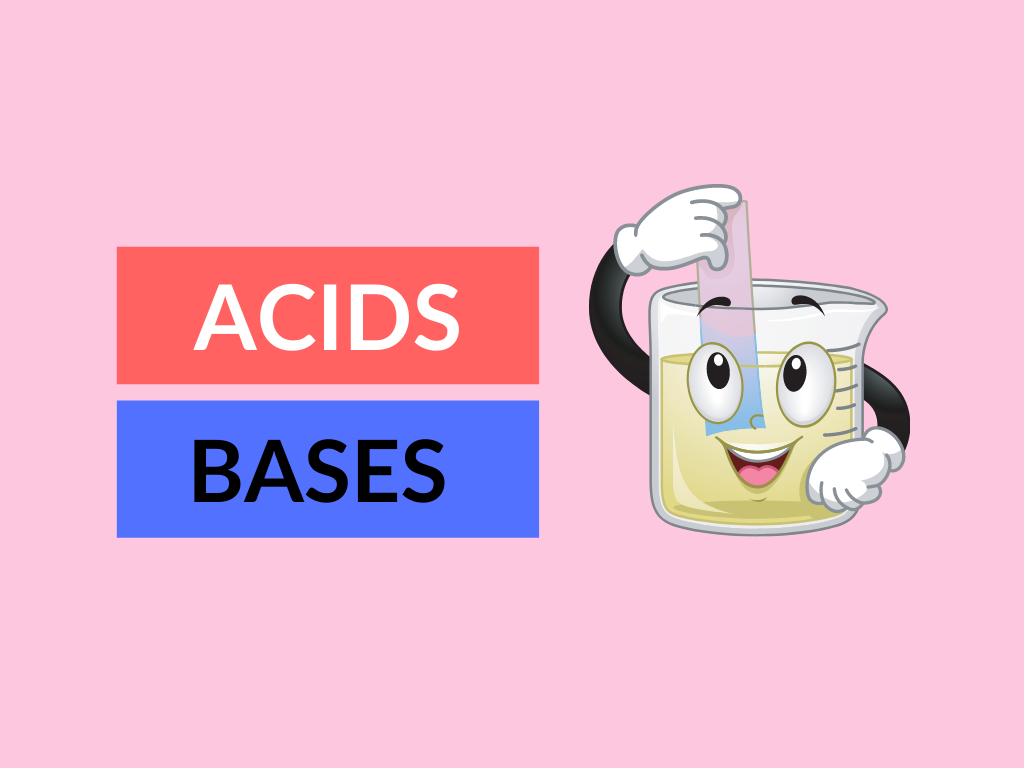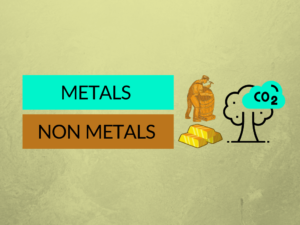Are acids and bases the same or are they different? Yes, they are definitely different. Acids are those substances that release one or more H+ ions in an aqueous solution. An acid is a substance that can donate a hydrogen ion. A substance capable of releasing one or more OH- ions in an aqueous solution is termed the base. let’s see more about the difference between acids and bases.
What is an Acid?
Acids are those substances that release one or more H+ ions in an aqueous solution. An acid is a substance that can donate a hydrogen ion (H+) to another substance in an aqueous solution. Acids have a pH of less than 7.0. Acids are sour in taste. It gives a burning sensation when it comes to contact with the skin. Acids are usually sticky in nature. Acids are mostly obtained from natural sources.
According to Arrhenius Concept, an acid elevates the concentration of Hydrogen ions when dissolved in water. But according to Bronsted-Lowry Concept, acids are substances that donate protons. Ions that accept the pair of electrons (electron pair acceptor – an electrophile), and possess vacant orbitals are termed ‘Lewis acid’.
Physical Properties of the Acids
- Acids are Sticky when reacted with water.
- They even Have a burning sensation
- When reacted with litmus paper, it Changes blue litmus to red color
- They are sour in taste
- They react with bases for neutralization of their properties
- They Conduct electricity
- React with active metals to liberate H (Hydrogen)
Acids are classified as:
- Strong acids, such as nitric acid (HNO3), sulfuric acid (H2SO4), and hydrochloric acid (HCl).
- Strong Lewis acids, such as AlCl3 (anhydrous aluminum chloride) and BF3 (boron trifluoride).
- Concentrated weak acids, such as acetic acid (CH3COOH) and formic acid (CH2O2).
- Lewis acids with specific reactivity, for example; solutions of ZnCl2 (zinc chloride).
- Superacids, which are extremely strong acids.
Uses of Acids
Acids are used in household cleaning and also for industrial purposes: Acids, i.e. Sulfuric acid and Nitric acid are both commonly used in paints, dyes, fertilizers, and explosives. In the chemical industry, acids are used as neutralizers in the production of salts.
For example, nitric acid (HNO3) reacts with ammonia NH3 for the production of ammonium nitrate – a fertilizer. They are used to ward off rust and corrosion from metals, using a technique termed ‘pickling.’ Acids (i.e. Sulfuric acid) are used to make batteries for flashlights and cars. Sulfuric acid is also used in mineral processing. Acid is used as a metal dissolver: Hydrochloric acid (HCl) is used to make aqua regia, which assists in dissolving noble metals like platinum and gold
What is the Base?
Those substances that accept the proton and donate electrons are termed as the base. A substance capable of releasing one or more OH- ions in an aqueous solution is termed the base. The pH values corresponding to bases are always greater than 7. A base that completely ionizes in water and thus produces a large number of hydroxide ions (OH- ions) is called a Strong Base or Strong Alkali. E.g. Sodium Hydroxide and Potassium Hydroxide.
According to Arrhenius Concept, a base is a compound that increases the concentration of hydroxide ions (OH–) when dissolved in water but according to Bronsted-Lowry Concept Bases, on the other hand, are substances that accept protons. Ions that donate a pair of electrons (electron-pair donor – a nucleophile), and possess a lone pair of electrons are termed ‘Lewis base’.
Physical Properties of the bases
- Bases are bitter in taste (except ammonia)
- When reacted with litmus paper they change red litmus to blue color
- They are slippery to the touch
- React with acids to neutralize their respective properties
- Turn pink when Phenolphthalein is added to the solution.
Bases are classified as:
- Alkalis or Caustics, such as NaOH (sodium hydroxide) and KOH (potassium hydroxide).
- Concentrated weak bases, such as NH3 (ammonia) in a concentrated solution.
- Alkali metals in metallic form, (i.e. elemental sodium), and hydrides of alkaline and alkali earth metals, i.e. NaH (sodium hydride), which function as a strong hydrate and bases to produce caustics.
- Superbases, which are extremely strong bases, such as metal amides, alkoxides, (i.e. NaNH2 – sodium amide), and C4H9Li (butyllithium), which is an organometallic base.
Uses of Bases
Bases like Sodium hydroxide (NaOH) are used in manufacturing soap, synthetic fiber rayon, and paper. It is also used in manufacturing some medicines and petroleum-refining, in cleaning sinks, ovens, and drains. Sodium bicarbonate (NAHCO3) is used in toothpaste, fire extinguisher, and baking soda. Calcium hydroxide (slaked lime) is used in the manufacture of bleaching powder. It is mixed with water and sand to create mortar that is used in the construction of buildings.
Slaked lime is also made use by the farmers on the fields for neutralizing the dangerous effects of acid rain. Calcium hydroxide also neutralizes the acid in water supplies and is used as a dressing material for burns caused by acid, as an antidote for cases of food poisoning, in the making of fungicides, in the whitewash mixture, and in dentistry. Bases are used in alkaline batteries like potassium hydroxide. They are also used in antiperspirant armpit deodorant, and in neutralizing soil acidity. Ammonium hydroxide (NH4OH) is used to clean grease stains from clothes.
Difference Between Acids and Bases
| Acids | Bases |
|---|---|
| An acid is a chemical substance which when dissolved in water produces a solution with hydrogen ion activity more than purified water | A base is an aqueous substance that absorbs hydrogen ions. |
| Physical Characteristics | |
| Acids depend upon the temperature; acids would look solid, liquid, or in the form of gas. | Bases are slippery and solid in nature (the exception is ammonia, which is gaseous). |
| Taste | |
| Sour in taste | Bitter in taste |
| Disassociation | |
| Acids release hydrogen ions (h+) when mixed with water | Bases would release hydroxide ions(OH-) when mixed with water |
| Chemical formula | |
| Those compound whose chemical formula begins with H are acids, for example, HCl (Hydrochloric acid) | Those compounds whose chemical formula ends with OH are bases, for example, KOH (Potassium hydroxide) |
| pH scale | |
| Less than 7 | Greater than 7 |
| Test with Litmus | |
| When in contact with Acid, the blue litmus paper turns into red | When in contact with Base, the red litmus paper turns into blue |
| Phenolphthalein Indicator | |
| It remains colorless | It changes to pink color |
| Uses | |
| Used as preservatives, fertilizers, processing leather, household cleaning, etc. | Used in antacid, soaps, detergents, cleanser, etc. |
| Examples | |
| Acetic acid and sulphuric acid | Sodium Hydroxide and Ammonia |
Conclusion
Acids and bases will play a vital role in our daily life because of the reactions, from digesting food to removing soap scum off a shower wall. Acids and bases are very significant in balancing the pH levels in the body so that it stays at a level of 7. When a person consumes acidic foods, the body uses a buffering system to neutralize the positive ions produced by the acids. On the other hand, bases are required to regulate and control the body from becoming too alkaline.
We conclude that both acids and bases are an important part of life, and are found in the environment, in foods, and in chemicals, including pharmaceuticals. They are vital, not only in the chemistry laboratory but also in our daily lives.
If you want to know more about Acids and bases https://www.sciencenewsforstudents.org/article/study-acid-base-chemistry-volcanoes-experiment




